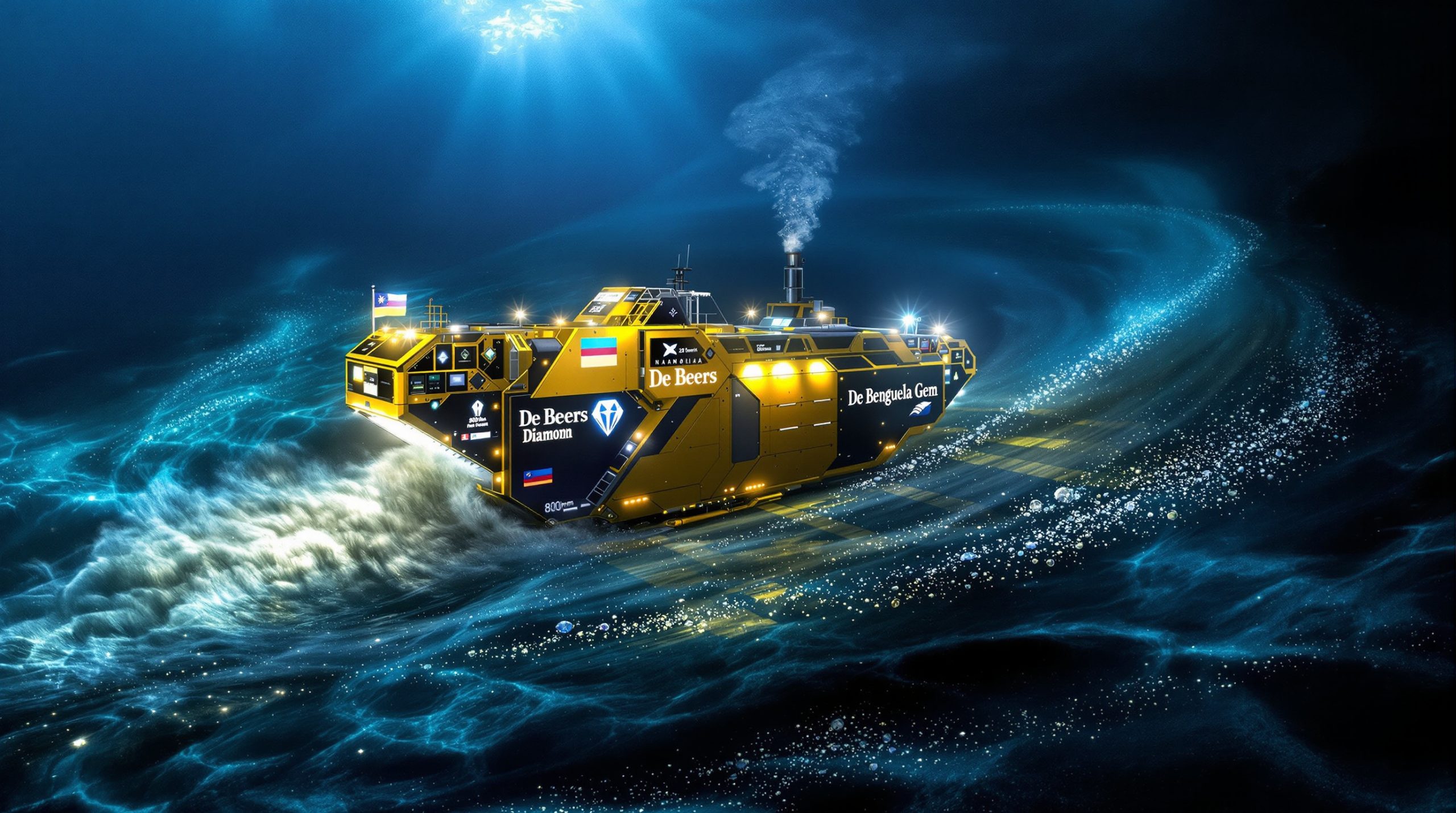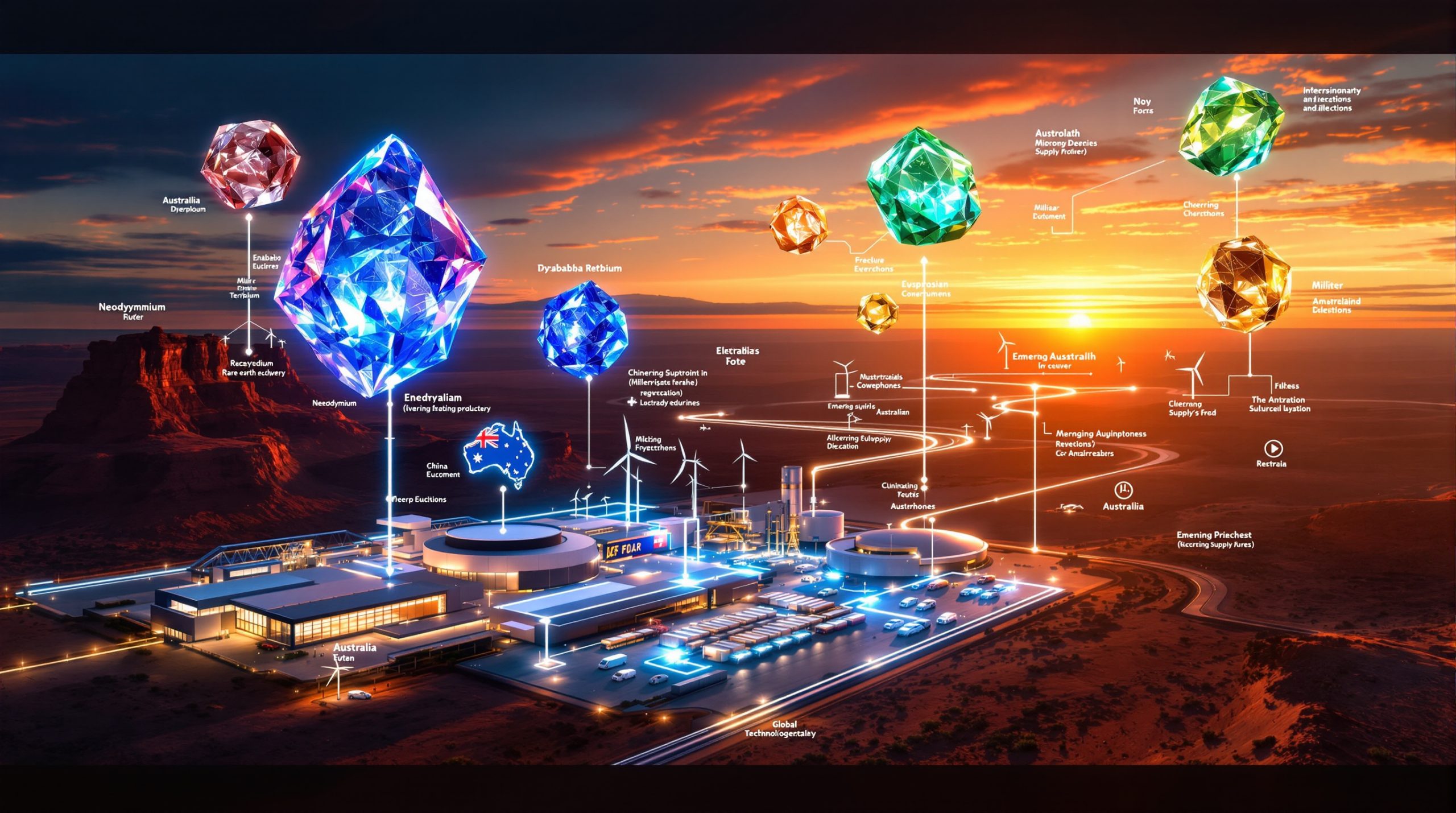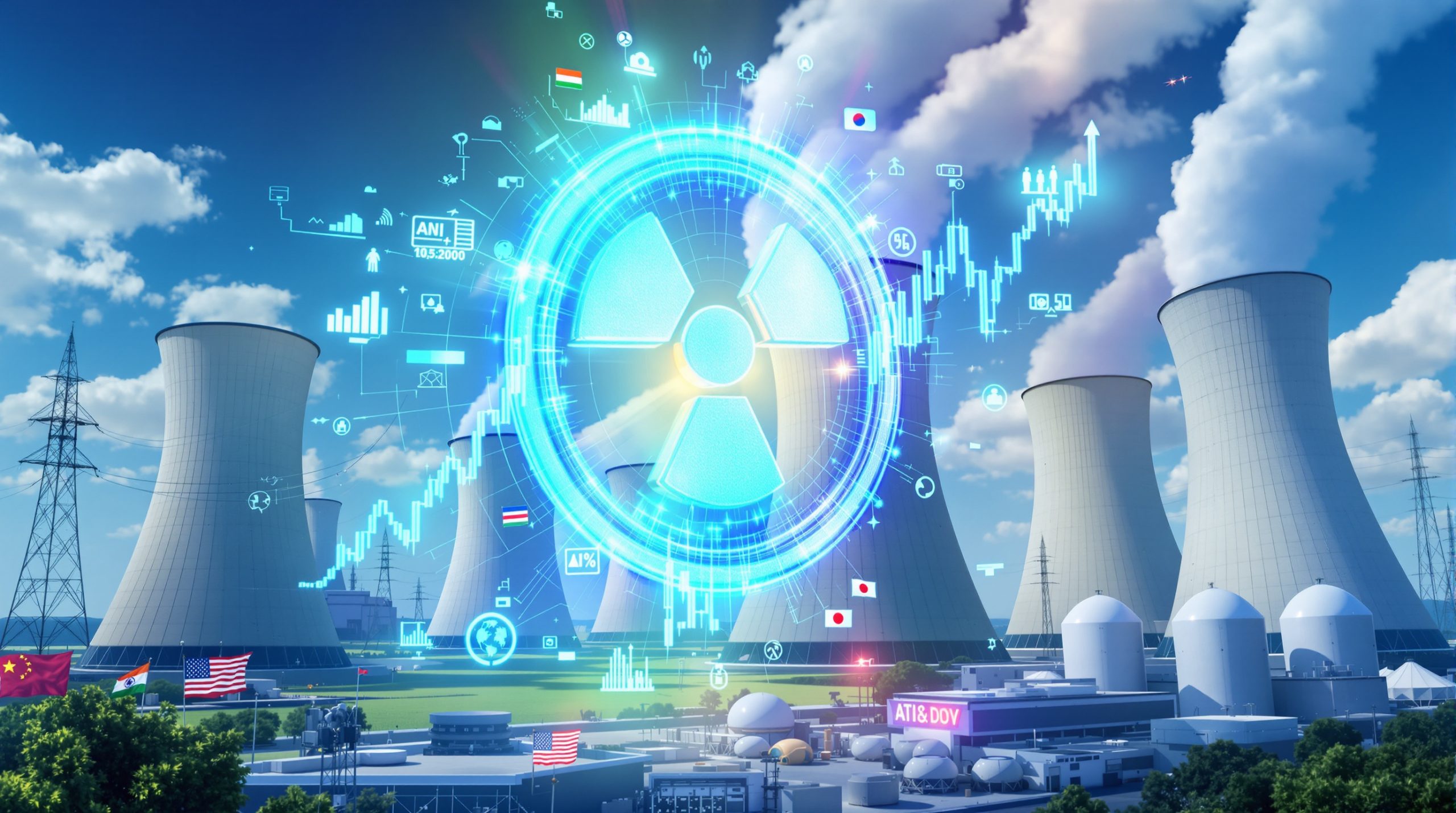What is the Longonjo Rare Earth Project in Angola?
The Longonjo project represents one of Africa's most significant rare earth developments, situated in Angola's mineral-rich Huambo Province. This strategic resource has captured global attention due to its exceptional geological characteristics and potential to reshape international supply chains for critical minerals.
Understanding the Geological Formation
The Longonjo deposit features a weathered carbonatite formation created through ancient volcanic activity that brought valuable minerals to the surface. What makes this site particularly valuable is the concentration of high-grade magnet metal rare earths, primarily neodymium and praseodymium (NdPr), within the top 30 meters of the deposit.
"The geological formation at Longonjo is extraordinary in terms of both grade and accessibility," notes Paul Athey, Pensana's Chairman. "With over 100,000 tons of neodymium-praseodymium, it ranks among the top three undeveloped rare earth resources globally." This substantial resource base positions Longonjo as a potentially transformative project in the global rare earth reserves landscape.
The carbonatite structure itself is relatively rare, occurring in fewer than 600 locations worldwide, with even fewer containing economically viable concentrations of rare earth elements. The weathering process at Longonjo has created an enriched zone that allows for simplified extraction compared to hard-rock rare earth deposits found elsewhere.
Project Scale and Significance
When fully operational, the Longonjo project will initially process 20,000 tons of material, with plans to scale to 40,000 tons as market conditions permit. This production scale puts it in the same league as established industry leaders like Lynas and MP Materials, the primary non-Chinese producers in the sector.
A particularly advantageous aspect of the project is its exceptionally low strip ratio of 0.2:1 (waste to ore), significantly below industry averages that typically range from 2:1 to 10:1 for comparable mining operations. This favorable ratio dramatically reduces operational costs and environmental impact.
Pensana has conducted seven years of comprehensive development studies prior to securing financing, including extensive environmental assessments, metallurgical testing, and community engagement programs. This thorough approach has positioned the project for expedited development now that financing is secured.
How is Pensana Financing the Angola Project?
Securing funding for rare earth projects has historically presented significant challenges, with many promising deposits remaining undeveloped due to financing constraints. Pensana's approach to overcoming these hurdles offers valuable insights into the evolving landscape of critical minerals financing.
The Financing Structure
Despite challenging market conditions, Pensana has secured a comprehensive financing package for the Longonjo project. The financing structure incorporates both sovereign and commercial elements:
"We've assembled a diverse financing consortium that includes Angola's sovereign wealth fund (FSDA) as a major shareholder, commercial banking through ABSA Bank of South Africa, and strategic support from the African Finance Corporation," explains Athey. "This creates a balanced financial foundation with approximately 60% debt and 40% equity."
The carefully structured approach requires the equity portion to be drawn down first, providing initial development capital, followed by the debt financing as the project advances. With an initial market capitalization of approximately $100 million USD, the company has established a solid foundation for growth as the project progresses toward production.
Overcoming Financing Challenges
What makes Pensana's achievement particularly notable is that financing was secured during a period of cyclical lows in rare earth pricing and when equity markets were largely closed to speculative mining ventures. This counter-cyclical approach could potentially position the company for significant upside as market conditions improve.
The financing process involved extensive due diligence by technical consultants and legal teams representing the lenders, with definitive documentation and conditions precedent expected to be completed over a 6-9 month timeframe. A notable endorsement came from the U.S. Development Finance Corporation (DFC), which contributed $3.4 million to support the project's development.
"Securing financing at the bottom of the rare earth price cycle was strategic," Athey notes. "While challenging, it demonstrates the project's robust economics and provides shareholders with substantial leverage to navigating investment opportunities in improving market conditions."
What Will Pensana Produce from the Angola Project?
Rather than following the conventional approach of producing basic rare earth concentrate, Pensana has developed a more sophisticated strategy focused on higher-value products and independent supply chains.
Moving Beyond Basic Mining
The Longonjo project is designed to produce mixed rare earth carbonate (MREC), a midstream product representing a significant step up the value chain from the basic concentrates typically exported from developing nations to China for processing.
"Our mixed rare earth carbonate is a super clean product that meets stringent customer specifications," Athey emphasizes. "We've laboratory tested and validated this product with potential customers, confirming its marketability and value."
The project targets annual production of 2,000-2,500 tons of MREC, containing the critical elements required for high-performance permanent magnets essential to electric vehicles, wind turbines, and other clean energy technologies. This production volume would be significant enough to impact global supply but manageable enough to ensure quality control during initial operations.
Laboratory validation has been conducted at scale, with 100 tons of material from Longonjo processed through pilot facilities in Perth, Australia. This testing confirmed both the extraction process and the quality of the resulting product, reducing technical risk for the project.
Creating a Non-Chinese Supply Chain
Perhaps the most strategically significant aspect of Pensana's approach is its focus on establishing rare earth processing capacity outside China's dominant ecosystem. The company is in active discussions with separation facilities outside China that could process its MREC into individual rare earth oxides.
"We've sent product samples to potential customers for qualification and pre-qualification," reports Athey. "These discussions include Japanese groups and other international partners interested in securing non-Chinese rare earth supplies."
The company expects to announce formal offtake arrangements in the near future, potentially establishing one of the first complete non-Chinese supply chains for rare earth elements. This development could carry significant implications for industries seeking to reduce supply chain risks associated with the critical minerals race and geopolitical tensions.
What is the Project Timeline and Development Status?
With financing secured, Pensana has moved rapidly into the implementation phase, with site preparation and early construction activities already underway at Longonjo.
Current Status and Construction Timeline
Site mobilization has begun with engineering teams organizing preliminary site preparations ahead of major construction activities. The first equity component drawdown is expected within weeks, providing capital for initial development phases.
"We're targeting construction completion by the end of 2026," Athey states. "This will be followed by a six-month commissioning and ramp-up period extending into 2027, with full production expected to be achieved later that year."
The company has adopted a modularized equipment package approach to reduce construction risk, with key processing components being assembled off-site before installation. This strategy is particularly valuable given the project's location and helps mitigate potential delays associated with on-site fabrication.
Testing and Validation Process
A distinctive aspect of Pensana's development approach has been its comprehensive testing program. The company transported 100 tons of material from Longonjo to laboratories in Perth, Australia, where it was processed through equipment manufacturers' facilities to validate the entire process route.
This pilot-scale testing produced kilogram-scale samples that were provided to potential customers for quality verification. This approach significantly reduces technical risk compared to projects that rely primarily on laboratory-scale testing or theoretical process designs.
"The extensive pilot testing we've conducted provides confidence not just to our technical team, but also to financiers and potential customers," notes Athey. "It demonstrates that our process design will perform as expected at commercial scale."
How Does Pensana Plan to Address Separation Challenges?
The separation of individual rare earth elements represents one of the most technically challenging aspects of rare earth production, with significant implications for project economics and market access.
The Separation Bottleneck
Separation typically involves approximately 27 distinct steps to produce various rare earth products from mixed feedstock. This complex process requires specialized expertise and substantial capital investment, with most existing capacity currently located in China.
"The technical challenges of separation shouldn't be underestimated," Athey acknowledges. "Outside of China, separation expertise is limited, which creates both challenges and opportunities for new market entrants."
Rather than attempting to develop its own separation capabilities immediately, Pensana has adopted a strategic approach focused on producing a high-quality intermediate product (MREC) that can be processed through existing facilities globally.
Strategic Approach to Processing
By designing the Longonjo project to produce mixed rare earth carbonate rather than attempting full separation initially, Pensana maintains flexibility regarding downstream processing options. The company is in discussions with multiple parties who possess separation capacity outside China.
"Our approach creates options," explains Athey. "MREC can be directed to various facilities globally, depending on commercial terms and strategic considerations. The final steps from oxide to metal conversion are less technically challenging and more widely available."
This adaptive strategy allows Pensana to focus on establishing initial production while exploring partnerships for downstream processing. The company's ultimate goal remains participation in a complete non-Chinese supply chain, but its phased approach reduces initial capital requirements and technical risk.
What is the Market Outlook for Rare Earth Elements?
The rare earth market exhibits characteristic cyclicality, with current prices at cyclical lows despite strong long-term demand projections driven by clean energy transitions and advanced technologies.
Current Market Dynamics
Pensana's development timing coincides with the bottom of the rare earth price cycle, potentially positioning the company for significant value appreciation as market conditions improve. The contrast between Pensana's current market capitalization of approximately $100 million USD and established producer Lynas's $4 billion valuation highlights the potential growth trajectory.
"Our mid-case scenario values the project at $3-4 billion USD," Athey notes. "While market conditions will ultimately determine valuation, the fundamental supply-demand dynamics for critical rare earths remain compelling."
Industry analysts project a potential supply gap of 40,000-70,000 tons of NdPr oxide by 2030 as demand from permanent magnet applications continues to grow while new production capacity faces development challenges. This structural imbalance suggests potential for sustained price support as new applications emerge.
Future Demand Drivers
Electric vehicle production continues to drive significant demand growth for rare earth permanent magnets, with each EV requiring approximately 1-2 kilograms of NdPr. Similarly, offshore wind turbines utilize substantial quantities of permanent magnets, with direct-drive designs containing approximately 600 kilograms of NdPr per megawatt of capacity.
"Beyond these established applications, we're seeing emerging demand from humanoid robots, which require dozens of permanent magnets for precision motion control," observes Athey. "The automation revolution represents a potentially massive new market that hasn't been fully factored into demand projections."
Additional applications driving future demand include high-speed maglev trains, medical imaging equipment, and various electromagnetic applications in consumer electronics and industrial machinery. These diverse end markets provide natural hedging against downturns in any single sector.
What Ownership Structure Will Pensana Maintain?
The project's financing structure creates various potential ownership scenarios that will evolve as development progresses and financing obligations are fulfilled.
Ownership Scenarios
Pensana begins with 84% ownership of the Longonjo project, with the remaining interest held by local partners as required under Angolan mining regulations. As the project advances through financing and development phases, this ownership percentage will evolve.
"Our preferred scenario involves dilution to approximately 70% ownership with refinancing of certain facilities," explains Athey. "Alternatively, without refinancing, our ownership could potentially decrease to approximately 52% as various financing instruments convert or vest."
A key consideration is the $108 million mezzanine repayment facility due between 2027-2030. The company's approach to addressing this obligation will significantly impact its ultimate ownership position and capital structure. Importantly, the financing has been structured at the asset level, providing flexibility regarding corporate strategies.
Future Expansion Plans
With the initial development phase focused on establishing production, Pensana is simultaneously planning for expansion. The DFC study specifically examined potential expansion options, with plans to double capacity once initial production is established and stabilized.
"We expect expansion to move relatively quickly after commissioning the initial facility," Athey notes. "The groundwork we've laid through comprehensive development studies provides a clear pathway to increased production."
The company is also exploring additional capital options from strategic partners interested in securing access to rare earth supplies. These partnerships could potentially include downstream processing capabilities, enabling vertical integration and higher-value product streams in future development phases.
FAQ About Pensana's Angola Rare Earth Project
What makes the Longonjo project different from other rare earth projects?
Unlike many aspiring rare earth developments, the Longonjo project is fully financed and under construction. Its exceptional geological characteristics include extremely high-grade ore in the top 30 meters and a remarkably low strip ratio of 0.2:1, creating highly favorable economics. The project's design focuses on producing mixed rare earth carbonate rather than basic concentrate, positioning it higher in the value chain than many competing projects.
How does Pensana plan to compete with Chinese rare earth dominance?
Pensana's strategy centers on establishing partnerships with separation facilities outside China to create an independent supply chain. By producing high-quality mixed rare earth carbonate that meets rigorous specifications, the company provides an attractive feedstock for separators seeking to reduce dependence on Chinese sources. This approach aligns with growing government initiatives in the US, Europe, and Japan to develop resilient supply chains for critical minerals essential to energy transition technologies.
What are the key milestones for the project's development?
The project is currently in the mobilization phase, with construction activities beginning shortly. Construction completion is targeted for late 2026, followed by a six-month commissioning period extending into 2027. Full production is expected by mid-2027, with potential expansion studies already underway. Offtake announcements are anticipated in the near term, representing another critical milestone in establishing the project's commercial framework. Furthermore, Australia's $400 million boost to Iluka's rare earth refinery shows how other countries are investing in this sector, with Angola's rare earth project potentially benefiting from similar government support in the future.
Want to Discover the Next Big Mineral Find Before the Market Does?
Discovery Alert's proprietary Discovery IQ model delivers real-time notifications of significant ASX mineral discoveries, instantly transforming complex geological data into actionable investment opportunities. Visit our discoveries page to see how early investors in major mineral finds have achieved extraordinary returns.




